Bread - the one absolute staple of French cuisine.
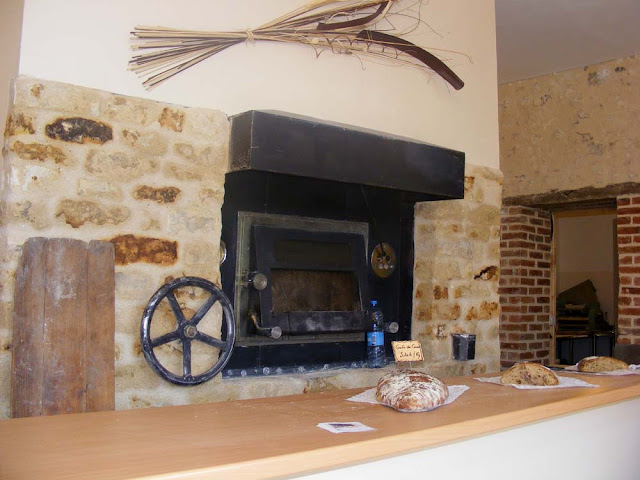 |
The modern steam injected stone based oven in one of the bakeries in our village. The water
bottle is for adding water into an external inlet to periodically top up
the steam reservoir. |
Like most things French, bread is not just a simple matter of water, flour, yeast, and common salt - although by law these are the only ingredients allowed in the item labelled "pain".
 |
| One of our local bakers at work. |
The traditional french loaf is not the baguette, nor is it the croissant, or even the "pain de
campagne", it is the boule. A round loaf, usually obtainable in two sizes, the petite boule and the boule.
A typical boule, cut.
A good boule stays fresh a long time - essential back in the days when
you made your own bread, because you don't want to have to bake every
day. When bread started to be baked commercially, the shops you bought
the bread in were called boulangeries. The traditional boule was
naturally leavened in the fashion of a sourdough rather than the modern
variety using baker's yeast. Interestingly it still stays fresh quite a
long time…
It is, though, the baguette most people think of as being the archetypal
French loaf. Indeed, in anglophone countries a baguette is called a 'French stick' or 'French loaf' or even just 'French bread'. This is ironic - the all pervasive
baguette only came about as the result of a technological advance made
in Vienna and a law passed in 1920. In some places in France, the
baguette is still known as a vienne.
 |
| A long loaf made for a food and art festival (L'Art et Lard) in the next village to where I live. Customers buy chunks of the loaf which is priced by weight. |
The technological advance necessary was the invention of an oven with
steam injectors, perfected (or at least made reliable) in Vienna in the
mid 19th century. The law was one which stated that bakers couldn't
start work before 4.00 am, thus making it impossible to get a
traditional loaf made before opening the shop for trade at 6.00 am. I am
not sure if the law was a labour law or a law passed for the
convenience of those trying to sleep.
What I do know for sure is that is is extremely difficult to stop eating
good pain, fresh from the boulangerie and still warm from the oven.
 |
| This parking sign indicates that parking is not allowed, but stopping for 10 minutes will be tolerated. You only ever see these signs outside bakeries and pharmacies. |
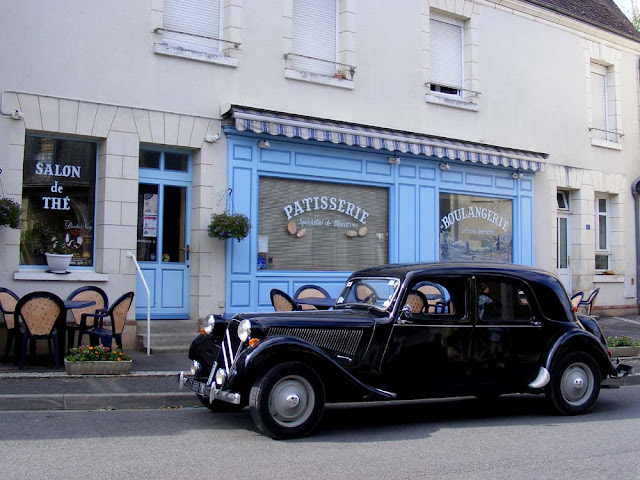 |
| Claudette parked outside a bakery in one of Loire Valley's officially most beautiful villages. |
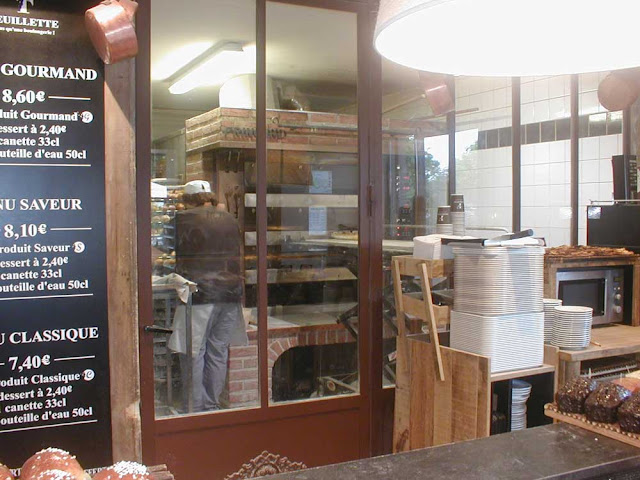 |
| A glimpse into the back of a bakery near Blois. |
 |
| Organic sourdough bread at the market in my village in the Loire Valley. |
************************************************
For details of our private guided tours of chateaux, gardens, wineries, markets and more please visit the Loire Valley Time Travel website. We would be delighted to design a tour for you.
We are also on Instagram, so check us out to see a regularly updated selection of our very best photos.
We are also on Instagram, so check us out to see a regularly updated selection of our very best photos.


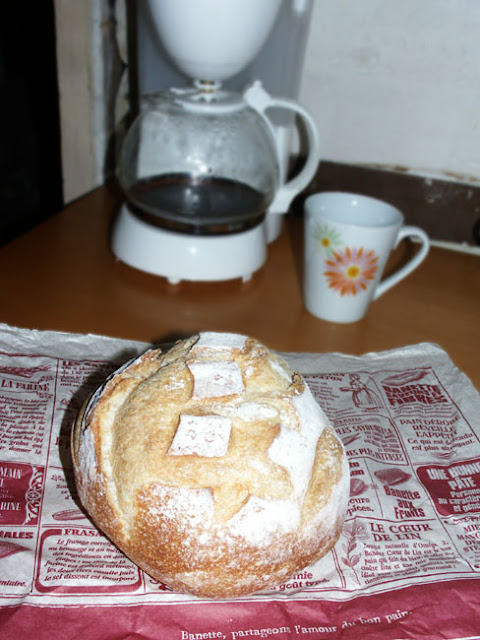
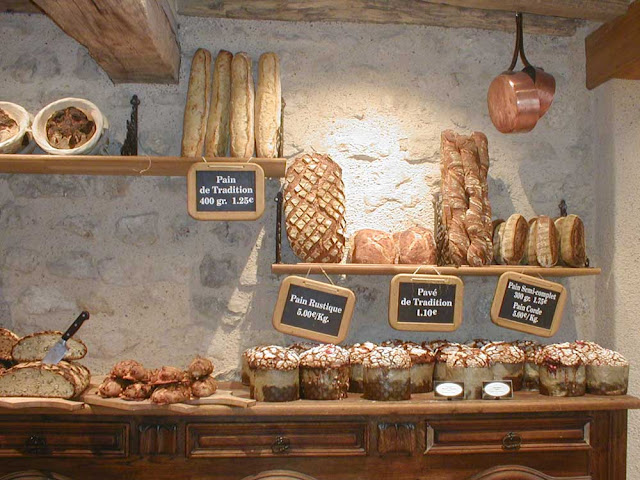
4 comments:
Careful... I've always been told in France that eating bread still warm out of the oven will give you indigestion. In the U.S., the loaf shaped like a baguette ( a "wand")or the longer and fatter pain is just called "French bread." Not "stick" or "loaf."
Niall says for his parents and grandparents in Scotland, what we would now call a baguette was known as a "Vienna" roll. Curious historical connection.
You can still buy Vienna rolls in England, small, oval rolls or oblong mini loaves. I remember them being rather more pointy when I was a child and I'm sure they used to be sold by from the baker's van that did its rounds of the villages.
French bread is certainly addictive, eaten either with cheese, jam or just dipped into soup or the wonderful sauce from moules marinières.
It took me a while to understand the difference between a "pain" and a "baguette", which some ask for as a "flute" locally and which in the UK we would call a French stick or French bread. And I never made the connection before between a "boule" and a boulangerie - obvious when you think about it!
Really interesting - thanks
Post a Comment